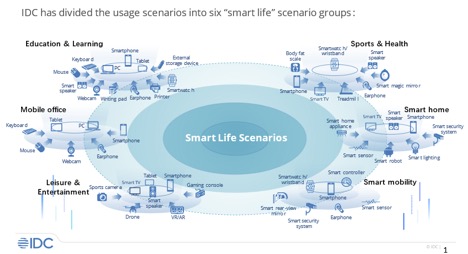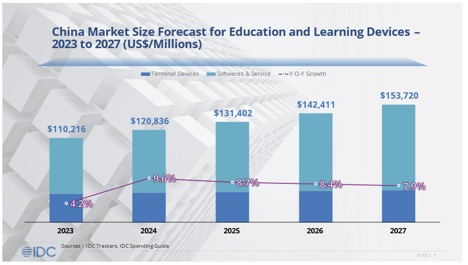
AI to be critical in learning and education: IDC
EP&T Magazine
Automation / Robotics Electronics Engineering AI artificial devices education intelligence learning smart TechnologyEspecially true as devices market to exceed USD$150 billion by 2027
The shipments of smart devices in learning and education has grown together with their capability, applicability and value. The ecosystem now plays an increasingly important role in the market development with improved interoperability and user experience so that devices are working together for mutual benefits. New user scenarios are now more often associated with an associated ecosystem development.
Therefore, to better understand the smart device market, IDC has divided the usage scenarios into six “smart life” scenario groups: leisure and entertainment, mobile office, learning and education, fitness and health, smart home, and smart mobility.

As the summer vacation ends, the new education semester will bring more focus on new scenarios in education that are enabled by smart devices and associated ecosystem developments.
Review of sales
The device sales total in the month of July (including tablets, children’s smart watches and PCs) was higher than the monthly average over the first half of 2023. However, we have seen sale trends vary strongly by product as they follow very different product development cycles.
1) Smart Tutoring Tablets is a popular and rapidly developing category in the education and learning devices market with new players still joining. In the first half of 2023, 2.19 million units were shipped to the learning and education market – an increase of 37% over last year; In July 2023, 410 thousand units were shipped – an increase of 49% over July 2022.
2) Kid’s smartwatch sales for children were stable with sales in the first half of 2023 at 6.88 million units, up 1% from 2022. Demand is supported by an increase in children’s outdoor activities but is still recovering. Sales in July 2023 were down 3% from July last year at 1.6 million units, with more demand expected in August as new products are released.
3) K12 and College PCs recorded historically high sales during the pandemic, such that shipments in the following first half of 2023 dropped by 26% at 5 million units; In July 2023, this significantly recovered, with sales down only 12% YoY at 1.04 million units.
Five key highlights
1) The Chinese lifestyle-sharing platform Xiaohongshu, increased sales with a new closed-loop grass-roots live broadcasting solution;
2) Summer promotions drove sales in the recycling end of the second-hand market and second-hand platforms also tried summer sales;
3) The E-commerce platforms that support student identity authentication has improved the efficiency of sales to their members;
4) Consumer choice has been improved with promotions that integrated the devices across areas such as entertainment and fitness;
5) Summer promotions are demonstrating an increased convergence of online and offline channels, such as in experiential retail and short-term leases for temporary tenants.
Market size forecasting
According to IDC, the market size for devices used in education and learning scenarios reached US$110.2 billion in 2023, a year-on-year increase of 4.2%. It is expected to grow by 9.6% year-on-year in 2024, and the market size will exceed $150 billion by 2027.

In education and learning, there are many hardware manufacturers that work with different types of software and service providers, including AI solution providers and cloud service providers.
Developing trends of smart devices
The devices are increasing their value-add to education and moving towards personalization. The market size and per capita expenditure has increased as devices and services have improved functionality, personalization and widened their value-add.
Technological breakthroughs
From the rise of the Internet to the application of AI, new technology has brought about product category expansion and stronger growth across the learning and education market. According to IDC statistics, shipments of products to be used in learning and education reached 99.3 million units in 2023 and are expected to exceed 100 million units in 2024. In addition, it is estimated that by 2027, more than 90% of these devices will be equipped with AI-enhanced functionality.
The development trends of devices in learning and education will be associated with: AI, security, health factors and content resources:
1) AI has become one of the core differentiators in personalization and value-add;
2) Endpoint security will expand across content security, information security, user safety etc.
3) Health-related functions have become an important upgrade direction, using sensors and other technical advances to protect eyes, correct posture, encourage regular exercise, monitor sleep, etc.
4) Increased content drives the creation of ecosystems and is an important differentiator, that especially attracts parents.
Sophie Pan, Assistant Research Director at IDC China, believes that despite the age of the market for smart devices in education, it will remain strong for many more years with new suppliers joining the ecosystem to meet changing user’s needs. We will also see a growing space for innovation and improvement of smart devices used in learning and education due to new technology being easy to put into application; high market segmentation; and user’s needs changing from one generation to the next whilst their remains stable within-generation demand.
Generative and Large Language Model AI will continue to be a catalyst for the development of smart devices in education, specifically towards greater personalization and value-add.
